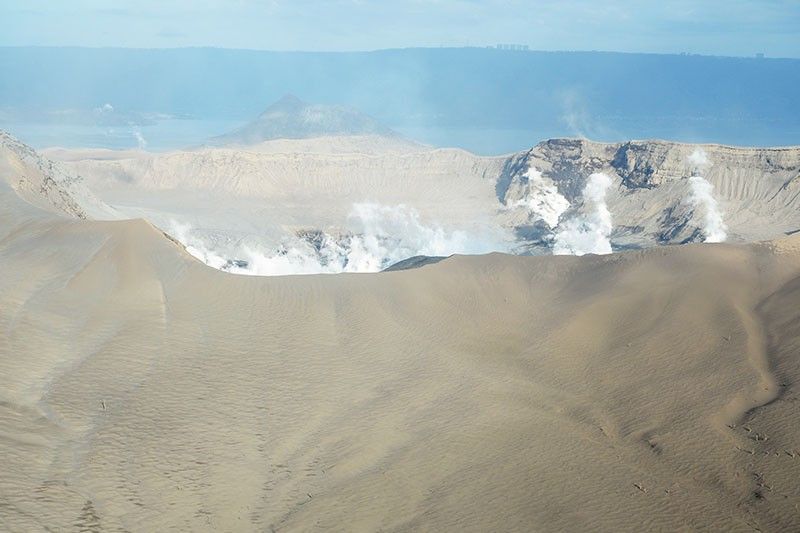Phivolcs: Lower volcanic activity in Taal but dangerous blast still possible

MANILA, Philippines — State volcanologists observed weak steam emissions, lower sulfur dioxide levels and less energetic volcanic activity in Taal over the past 24 hours but Alert Level 4 remains in effect, which means a potentially catastrophic blast is still a possibility.
The Philippine Institute of Volcanology and Seismology said the activity in the volcano’s main crater for the past 24 hours has been characterized by “weak steam emission” that belched ash plumes that are 500 to 600 meters tall.
The sulfur dioxide emission was measured at 344 tons, lower than the 4,253 tons earlier recorded. Ma. Antonia Bornas, Phivolcs volcano monitoring division chief, said this “reflects the reflection between groundwater and magma.”
Since the afternoon of January 12, the Philippine Seismic Network has plotted 719 volcanic earthquakes—176 of these were registered at magnitudes M1.2 to M4.1 and were felt at Intensities I (scarcely perceptible) to V (strong).
Between Monday and Tuesday morning, only five weak volcanic earthquakes were plotted by the PSN.
The Taal Volcano Network, however, recorded 448 volcanic earthquakes including 17 low-frequency event for the past 24 hours. The Taal network can record small earthquakes undetectable by PSN.
'Previous days more energetic'
“Compared to previous days, the previous days were really more energetic. The signals were so much prominent in our record. The numbers are more or less the same, the energy seems to be fluctuating but generally weakening so compared to previous days,” Bornas said.
But Bornas stressed that the occurrence of earthquakes and the presence of high level of sulfur dioxide signify ongoing activity undearground. She added the volcano has become “inflated,” because of the magma rising from the volcano.
“There is seeming weakening in activity but it doesn't mean the danger is over,” Bornas said in a mix of English and Filipino.
According to the wind forecast of state weather bureau PAGASA, ash may drift to areas south, southwest, west and northwest of Taal if the eruption plume remains below three kilometers. If the ash column is between three and five kilometers, ashfall may also reach some towns of Cavite and western Laguna.
But if a major eruption occurs and the eruption plume exceeds five kilometers, ash may also be drifted over Metro Manila and aprts of Laguna, Rizal, Marinduque and Quezon provinces.
Nearly 39,000 families or over 148,000 individuals are seeking temporary shelters in evacuation centers.
- Latest
- Trending
































